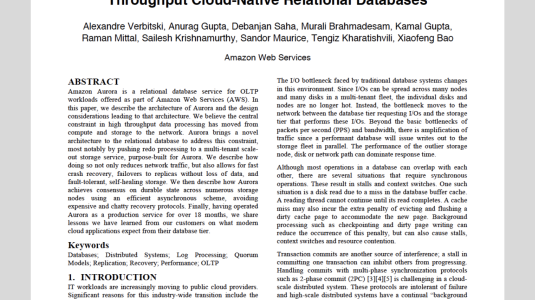The smooth-flowing traffic of the future is just around the corner. Advances in vehicle automation are converging with developments in machine learning (ML) and cloud computing to create self-driving vehicles that not only control themselves safely, but also have an oversized beneficial effect on the journeys of all the regular drivers on the road around them. Welcome to “mixed autonomy traffic”.
Leading the pack into this future is Alexandre Bayen, the Liao-Cho Professor of Engineering at the University of California Berkeley and director of its Institute of Transportation Studies. An expert in control and optimization, Bayen is playing leading roles in multiple transportation projects, ranging from cutting-edge, open-source traffic simulation and optimization, to large scale freeway observation that involves putting automated vehicles into real traffic to explore the impact of ML-derived self-driving behaviors. These automated vehicles also have human supervisors at the wheel, ready to take over the vehicle at any time if needed.
Before delving into Bayen’s work, an example of the promise of mixed autonomy traffic is in order.
Anyone regularly caught in “phantom” traffic jams, which have no obvious cause, knows how annoying they are. It is simply the nature of human drivers to create these so-called “stop-and-go waves” — we just can’t help jamming up then spreading out on the road, as illustrated by a brief video (above) of a classic 2008 experiment in which people are attempting to maintain the same speed while driving single-file around a circular track.
Fast forward to 2017, to a series of similar experiments led by Bayen’s collaborators, Jonathan Sprinkle of the University of Arizona and Daniel Work of Vanderbilt University. This work echoed the 2008 experiment, but with an enormous difference: of the 20 or so cars on a circular track, one of them could switch into self-driving mode. When it did, the effect on the stop-and-go waves was immediate — and remarkable.
Simply through the slowing or accelerating of this single car, in accordance with its traffic-optimization algorithms, the traffic waves dissipated significantly. In one test, fuel consumption of the cars in the ring was reduced by more than 40% and excessive braking events dropped from 8.5 per vehicle-kilometer to near zero.
The experimenters concluded that traffic flow control would be possible in real-life traffic with less than 5% of cars being automated.
A self-driving future
With that in mind, what will happen to our existing traffic flow when increasing numbers of vehicles are self-driving? This is the future being shaped by Bayen and his group. At the center of his work is an open-source framework called FLOW. With deep reinforcement learning at its heart, FLOW is an optimization and microsimulation tool for traffic flow. Don’t be fooled by “micro” in this context — the simulation features hundreds of thousands of vehicles on complex road systems. FLOW allows the virtual exploration of complex traffic optimization challenges on a wide variety of road set-ups.
“Traffic simulation engines have become really good, very accurate, in the last decade. And the computation required has become really tractable, mostly because of scalable cloud computing offered by Amazon Web Services and others,” says Bayen.
Deep reinforcement learning is particularly suited to developing mixed-autonomy traffic optimization because it enables simulated self-driving vehicles to try out different driving behaviors. If a set of driving policies results in lower fuel use without compromising journey time, for example, the algorithm is rewarded. “Ten years ago it was really hard to compute the outcome of experiments in simulation — and very costly. You could do a couple of intersections, and maybe a couple hundred vehicles,” says Bayen. “With the plethora of data available now, combined with the ability to do these computations very fast, it has become really quick to compute the rewards and to iterate until you get something that works very well.”
Achieving a FLOW state
Bayen is keen to clarify the primary goal of FLOW. “It’s important to differentiate between boosting energy efficiency and reducing congestion. We are not attempting to fix congestion — that is not our goal, and these would not be the right tools. We are improving the energy efficiency of traffic, which is a very different problem.”
We are not attempting to fix congestion — that is not our goal, and these would not be the right tools. We are improving the energy efficiency of traffic, which is a very different problem.
Indeed, in simulations, FLOW’s algorithms have a minimal effect on travel time — but a dramatic effect on the driving experience, Bayen explains. “The amount of braking is significantly reduced and the amount of acceleration — where most of the energy is burned and pollutants emitted — has been significantly reduced as well. That's the main challenge.”
In 2019, Bayen received an Amazon ML Research Award to support the development of "Applications of Deep-RL for Training Connected, Autonomous Vehicles in Mixed Environments". But even before the award, FLOW was intrinsically linked to Amazon Web Services (AWS), Bayen explains. “When we started FLOW in 2018, there were only three tools widely used for microsimulation of traffic: SUMO, Aimsun, and PTV Vissim. SUMO was an open-source platform already running on AWS, but Aimsun — now owned by Siemens Mobility — built the first instantiation of their software on the AWS cloud specifically for us,” says Bayen. “The FLOW Project was the first time anyone managed to put these three big components together: the machine learning, the cloud computing, and the simulation engine. It was historic.”
A key reason this combination is important, Sprinkle says, is big data: “For societal-scale systems to take advantage of ML, they need to take advantage of these gigantic datasets. Hosting the ML algorithms on AWS — in the same place the data are — speeds up discovery.”
The success of FLOW generated a lot of interest in Bayen’s group, including from the US government, which subsequently decided to fund the research. That is when Bayen and a broad collaboration, called the CIRCLES Consortium, was formed, with Bayen, Work, and Sprinkle among the co-principal investigators. They started working with Toyota, GM, and Nissan, to develop a proof-of-concept to demonstrate that mixed-autonomy traffic control actually works on the road. “That is what we are doing now, with the generous funding of the US Department of Energy,” says Bayen.
Part of this effort is a project called I-24 Mobility Technology Interstate Observation Network (I-24 MOTION). The CIRCLES Consortium is installing video monitoring infrastructure along six miles of I-24 in Tennessee, to gather extensive, top-quality traffic data. When completed in 2022, it will consist of 400 pole-mounted, 4k-resolution cameras. “The network is already gathering an astronomical amount of data — on the order of petabytes,” says Bayen. “It will not only provide the Tennessee Department of Transportation with a lot more operational capabilities for freeway operations, but also provide the research community with an unprecedented data set that has the potential to unveil a lot of interesting traffic features.”
Real life traffic testing
This is where the rubber hits the road. This year, the CIRCLES Consortium is deploying self-driving vehicles on that same stretch of I-24, to see how ML-derived self-driving algorithms might positively impact real-world traffic. “We’re hoping that by driving a few cars differently, it will reduce energy use for the entire stream of traffic,” says Sprinkle.

“This summer, we're doing 14 vehicles — four with automation and 10 as monitoring vehicles gathering local measurements,” says Bayen. Next year, another live deployment is planned, but with a dramatic increase in the number of automated and monitoring vehicles.
This step from simulation to real-world deployment is more like a giant leap. “If something runs really well in simulation, one still needs to be certain that it will transfer well to hardware and run well with real cars on real roads using imperfect data. That's a big challenge,” says Bayen.
To that end, since 2016, the US National Science Foundation has funded efforts to develop the software framework that enables FLOW to be deployed on a variety of real vehicles and many different hardware platforms. The real-world deployment is a cautious, painstaking process. “We have facilities at Berkeley and Vanderbilt for low speed, and later high-speed testing, that enables us to work through the sequence of steps,” Bayen notes. “Now we’ve done this on private roads, open roads, and have progressed to freeway traffic.”
Another challenge for this field is predicting how cars might transmit their locations in the future. There are also ongoing debates around how driver movement data will or should be collected, protected, transmitted, and shared, says Bayen. “Our job is to work on the different architectures that can support these many potential paradigms. These include fully ‘decentralized’ vehicles that do not need to talk to each other or to a central authority to improve overall traffic flow, or fully centralized, in which everybody talks to everybody. Or partially coordinated, in which cars only talk to their neighboring cars, and so on. While we wait for a public policy on this, we are developing an entire portfolio of algorithms spanning a multitude of paradigms. It's a lot of work!”
But it is work worth doing, says Bayen, because FLOW is highly scalable. “Many cities have good models of their traffic systems. Putting our software on top of it is really not difficult if those models run in AIMSUN or SUMO, two of the three major simulators. We can put such models into our framework and apply machine learning directly to it.” The cloud-based aspect is essential to this scalability. “Before the cloud became a reality in this arena, people would have a specific architecture that their traffic models would run on. But because FLOW is open source and on AWS, anyone can run it, from anywhere, including other research groups. That’s the power of the cloud.”
Work agrees: “Providing an open-source approach empowers new researchers to explore their own ideas. And using machine learning for large-scale systems is exciting because of the potential for benefits to all — even if only a few parts of the system change their behavior.” And the benefits also extend to the local and global environment, says Bayen, because the emissions per vehicle — both direct, and indirect for electric vehicles — are likely to be significantly reduced.
With the rate at which the technology of mixed-autonomy traffic is advancing, the generation of drivers hitting the roads five years from now may be confused when their parents marvel at how smooth freeway traffic is “these days”, despite the large numbers of vehicles on the road. For the rest of us, knowing that phantom jams’ days are numbered will probably make them easier to bear. Honk if you disagree.


















